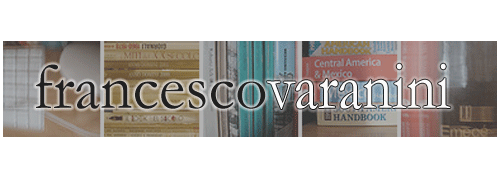Lo studio dell’Organizationa Symbolism è per sua natura interdisciplinare ed ibrido. Il mio paper propone un incrocio tra approcci tipici dell’etnografia, della critica letteraria, dei Cultural Studies… Non importano tanto le definizioni di campo, quanto lo sguardo personale, dove sono coinvolte tutte le competenze che il ricercatore si riconosce.
Di seguito l’abstract del mio paper.
The difference between flesh and meat is expressed in Spanish with a single expression: carne.
The ambiguity of the term, enriched by semantic contiguity between carne and body, and between carne and food, and still with carne and blood, it is the land open to novelists and poets – called to play with the polysemy.
Latin caro, carnis, from which the carne, descended from the Indo-European root ker, ‘cut’. Also derives from the same root the verb cortar: ‘to cut’.
Cortar la carne: thick it is the concentration of mean. Cut the meat is manifestation of professionalism, high competence. Cut the meat is necessary gesture to feed. Cut the meat is also clear, select, choose, clean. Cut is, symbolically, voluntarily sever ties with a society unable to welcome. Cut is a manifestation of what is said in Latin vis: strength, violence, and even vice. The knife violence is reflected in the weakness of flesh wound.
The Spanish-American literature offers us two exemplary texts, which speaks of animal meat intended for human food, to talk of power that oppresses the social body. Human beings, wounded by unjust organizations, and a sadistic power, end up hurting masochistically their bodies.
Esteban Echeverría, Argentine patriot and poet, wrote between 1838 and 1840 El matadero (The Slaughterhouse). The story, published only in 1871, after his death, is an indignant political complaint of the regime imposed by the cruel caudillo Rosas, who Echeverría fiercely disliked. And also, at the same time, explicit evidence of romanticism and faith in progress, to which Echeverría had approached in his years in Paris. In the Buenos Aires’s Slaughterhouse, men “reduced to machines”, forced to work to cut the meat does not have meat to eat for themselves.
One hundred years later Virgilio Piñera, Cuban poet and playwright, lives in Havana -as he writes itself- “an outcast, a social pariah life”. He has in mind the Matadero of Echeverría. He writes short, shocking story La carne (Meat, 1942). A man forced to hunger sharpens a huge kitchen knife and then, dropped you pants, cuts from the left buttock a nice fillet, and eats it.
Ten years after Piñera lives in Buenos Aires. He published the novel La carne de René (Rene’s Flesh, 1952). The young René is forced to attend a school that shaped the worship of the flesh, whose motto is “sufrir en silencio” (suffer in silence).
A friend explains the mean of this education to Rene: “You can be damned or be can saved; all depends on your dedication to the carne. If you live in a carnal world, be carnal and you will be saved. But if you think you live in a fairy tale, then you will be damned. “
The modern, positivist and realist hopes of Echeverría are replaced by Piñera’s postmodern refuge in paradox, in extreme solitary subjectivity, in a surreal, sardonic irony.
Both are processes of emancipation from exploitation.
